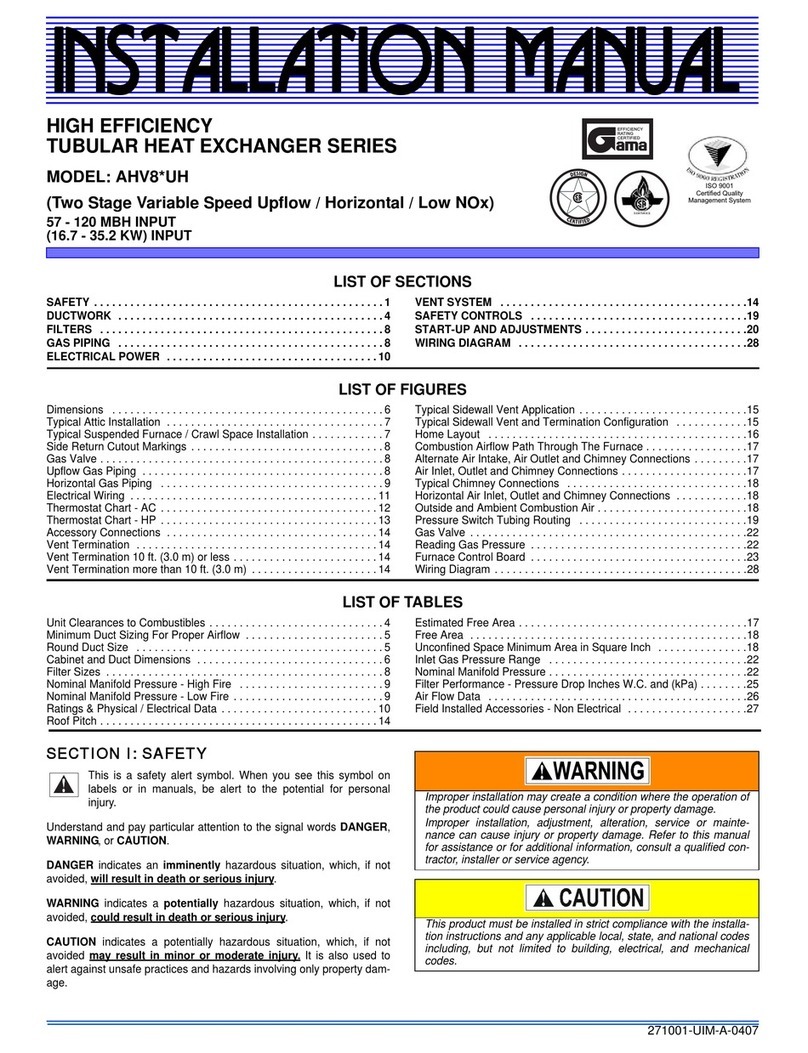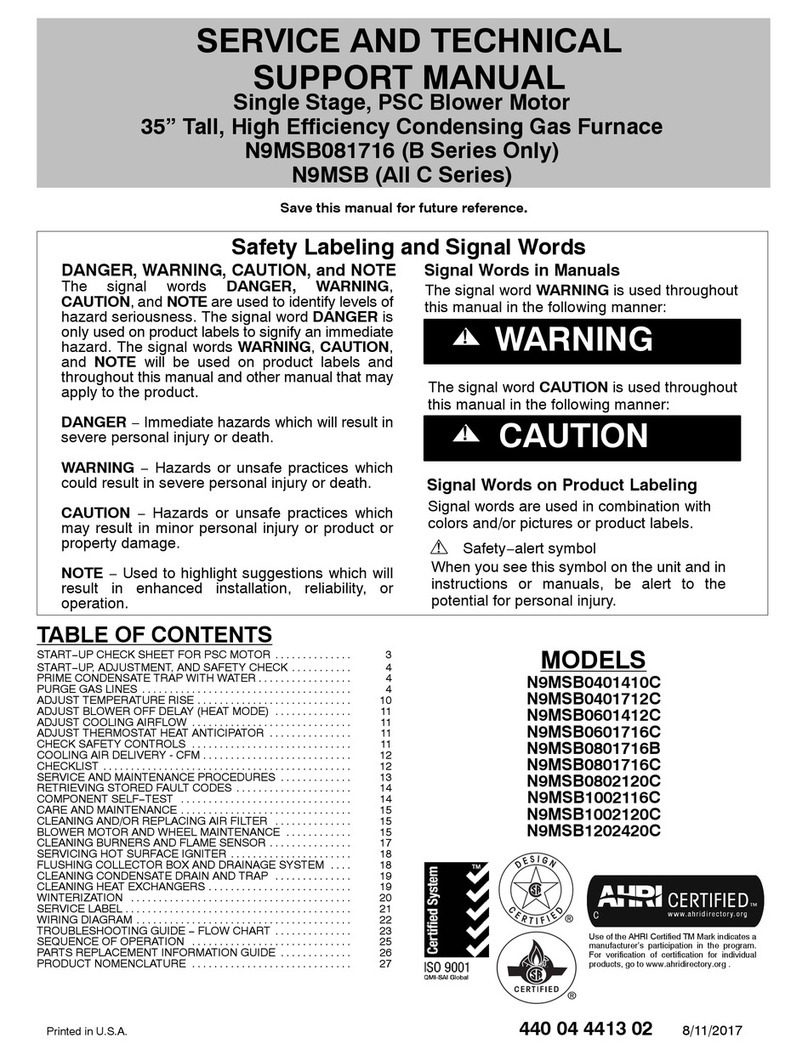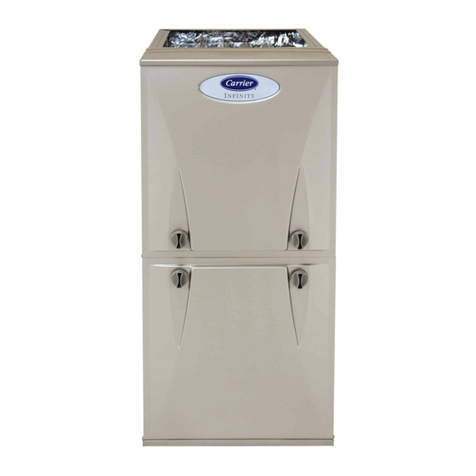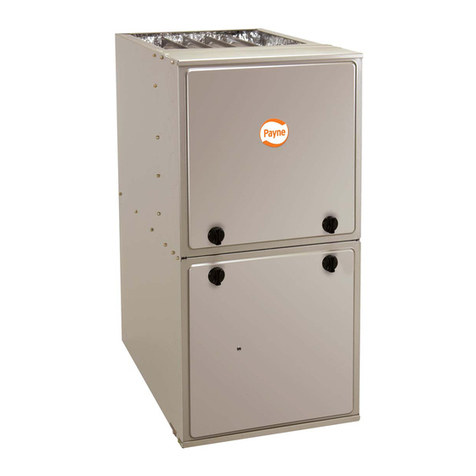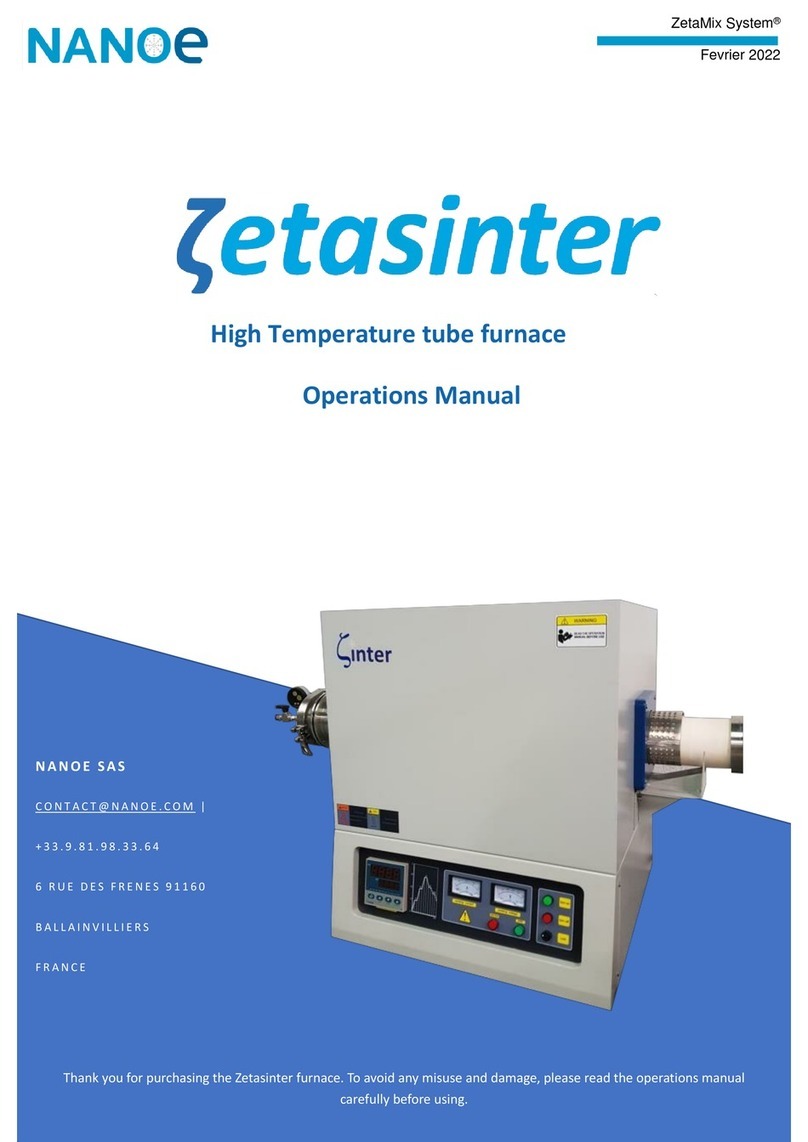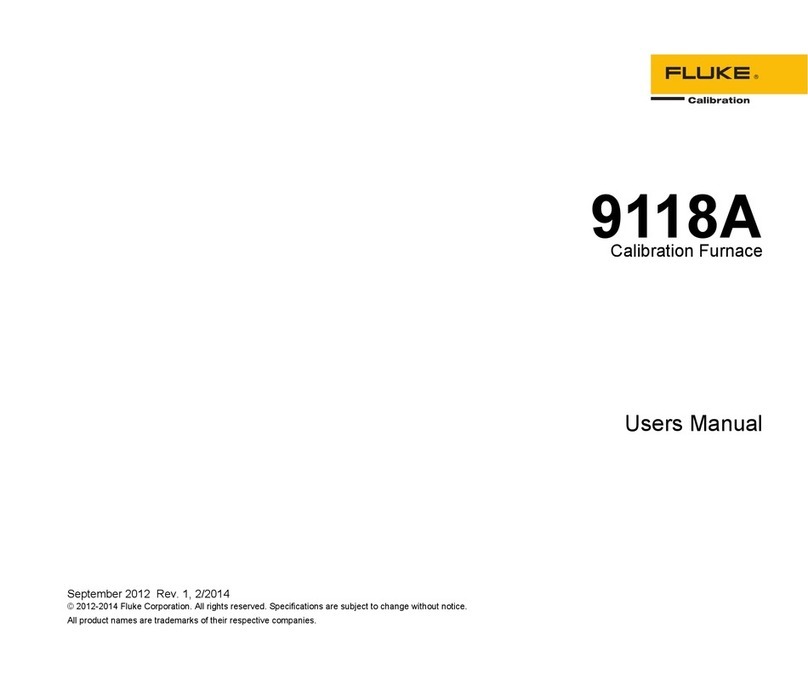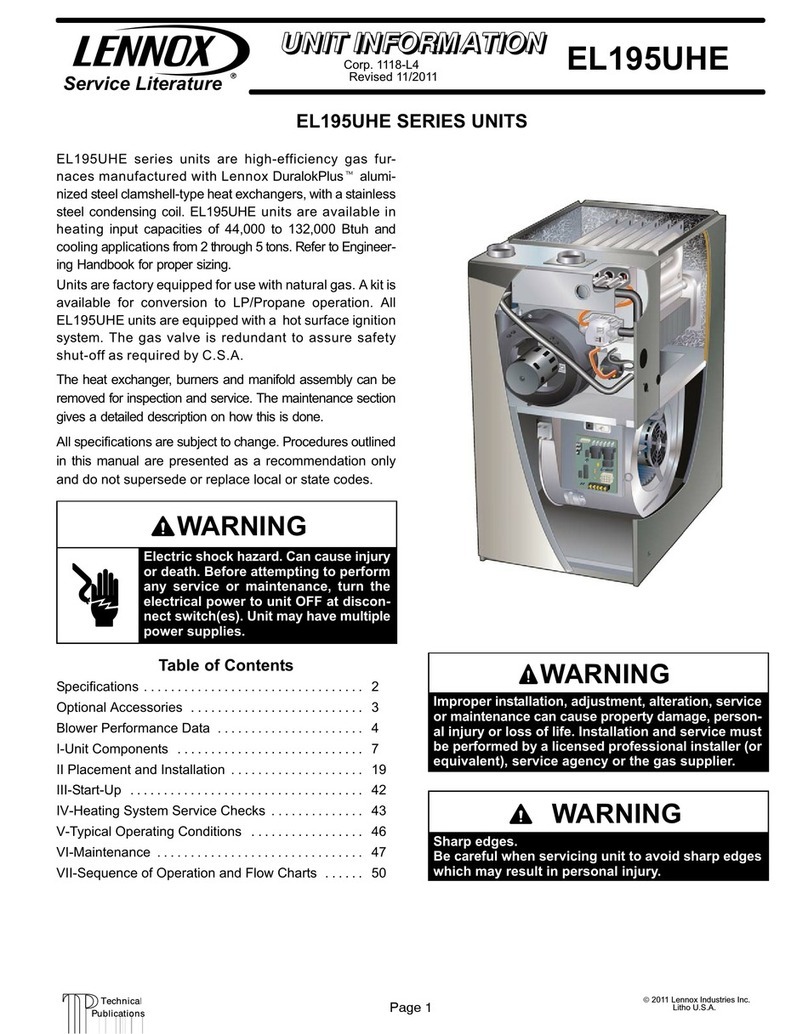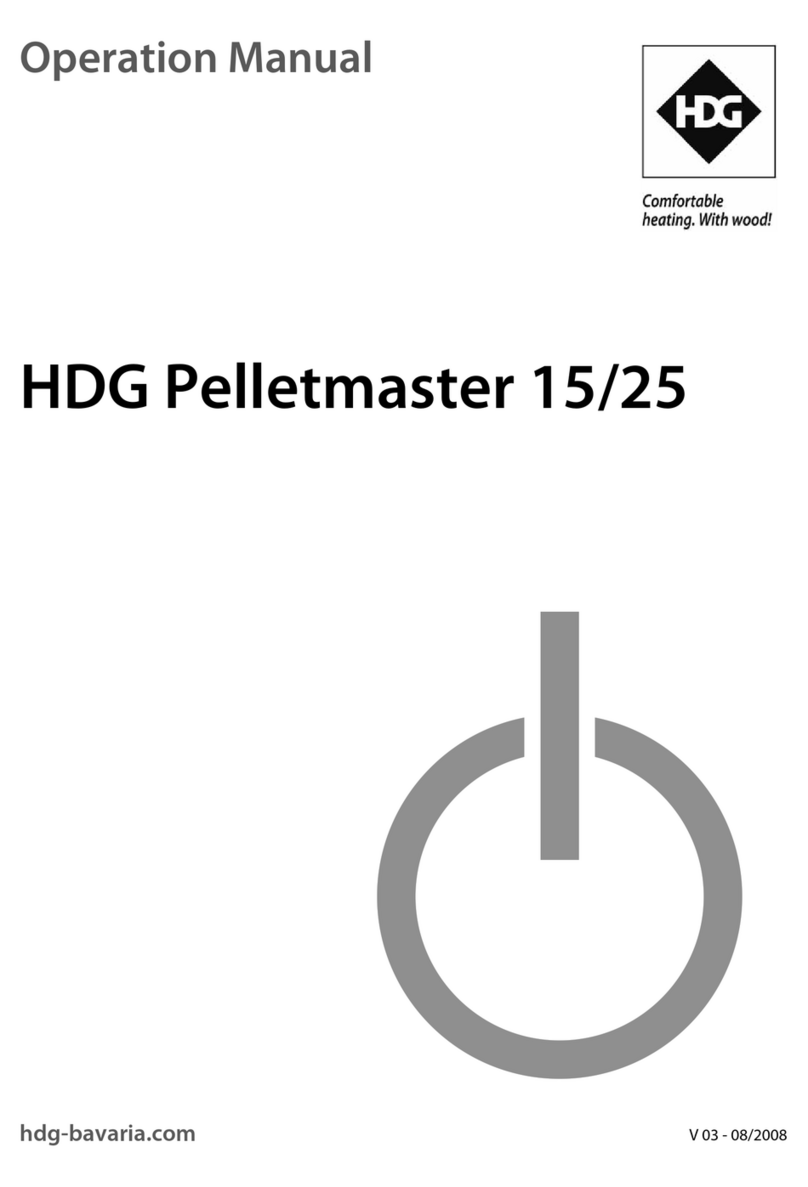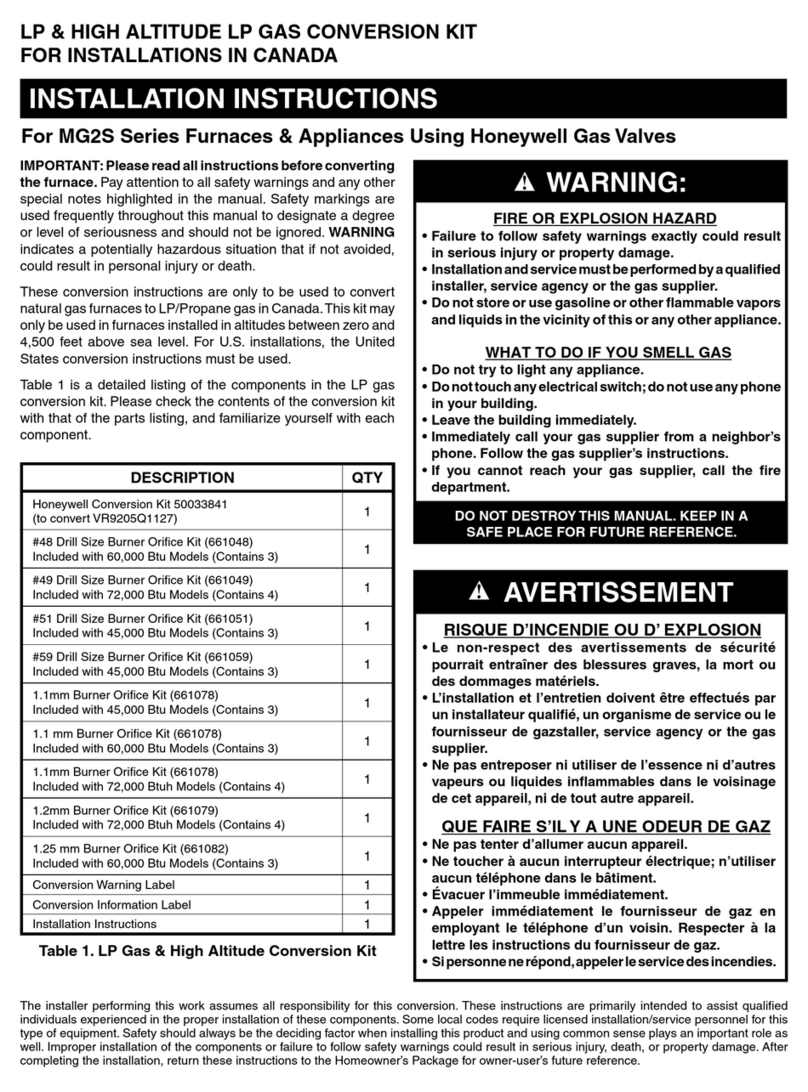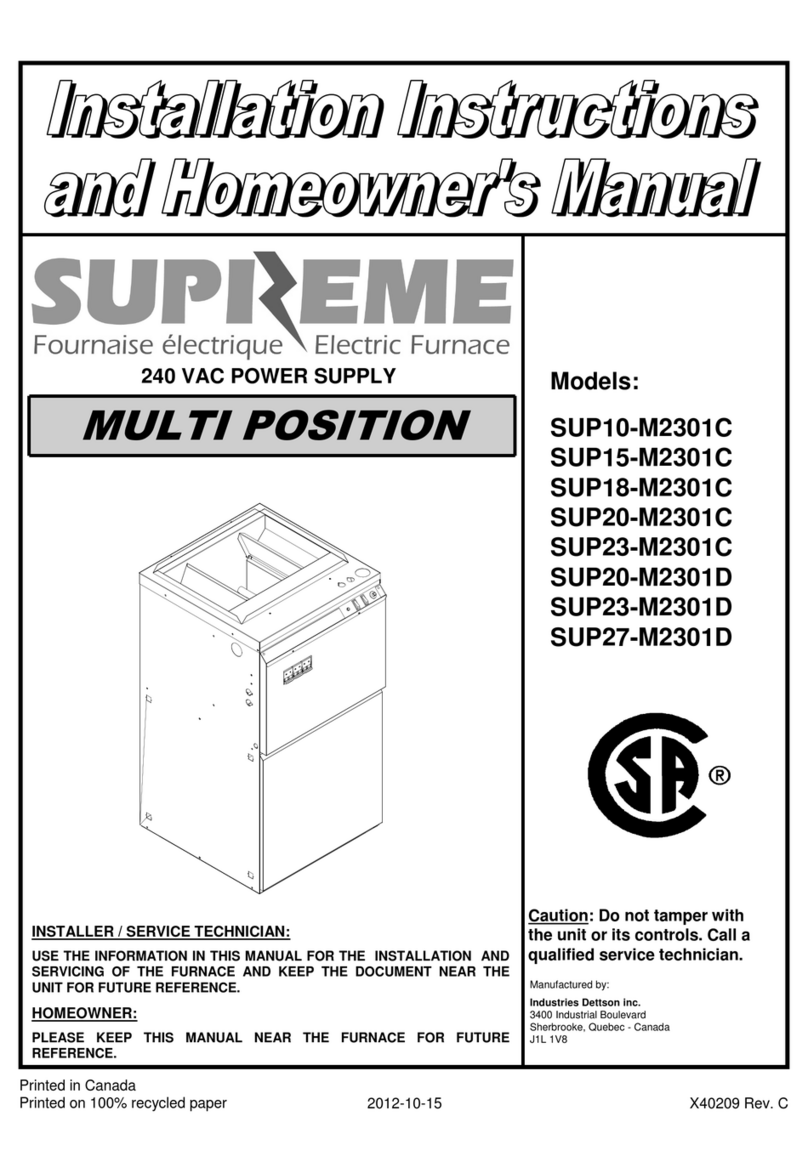8
CLEARANCE –
ACCESSIBILITY
The design of forced air furnaces with
input ratings as listed in the tables on
the following pages are certified by
CSA for the clearances to combustible
materials shown in inches.
See name/rating plate and clearance
label for specific model number and
clearance information.
Service clearance of at least 24 inches
is recommended in front of all furnaces.
ACCESSIBILITY CLEARANCES,
WHERE GREATER, MUST TAKE
PRECEDENCE OVER FIRE
PROTECTION CLEARANCES.
UPFLOW AND HORIZONTAL
FURNACES MUST NOT BE
INSTALLED DIRECTLY ON
CARPETING, TILE OR OTHER
COMBUSTIBLE MATERIAL OTHER
THAN WOOD FLOORING.
INSTALLATION ON A
COMBUSTIBLE MATERIAL CAN
RESULT IN FIRE CAUSING
PROPERTY DAMAGE, SEVERE
PERSONAL INJURY OR DEATH.
DOWNFLOW UNIT DESIGN IS
CERTIFIED FOR INSTALLATION ON
NON-COMBUSTIBLE FLOOR. A
SPECIAL COMBUSTIBLE FLOOR
SUB-BASE IS REQUIRED WHEN
INSTALLING ON A COMBUSTIBLE
FLOOR. FAILURE TO INSTALL THE
SUB-BASE MAY RESULT IN FIRE,
PROPERTY DAMAGE, PERSONAL
INJURY OR DEATH. THIS SPECIAL
BASE IS OFFERED AS AN
ACCESSORY FROM THE FACTORY.
SEE THE CLEARANCE LABEL
LOCATED INSIDE THE FURNACE
FOR THE APPROPRIATE MODEL
NUMBER.
THE SPECIAL BASE IS NOT
REQUIRED WHEN THE FURNACE IS
INSTALLED ON TOP OF AN AIR
CONDITIONING PLENUM.
A gas-fired furnace for installation in a
residential garage must be installed so
that the burner(s) and the ignition
source are located not less than 18”
above the floor and the furnace is
located or protected to avoid physical
damage by vehicles.
UPFLOW UNIT DESIGN REQUIRES
A SOLID METAL BASE PLATE (SEE
TABLE 1 OR FURNACE
CLEARANCE LABEL FOR PART
PLACEMENT OF COMBUSTIBLE
MATERIALS ON, AGAINST OR
AROUND THE FURNACE JACKET
CAN CAUSE AN EXPLOSION OR
FIRE RESULTING IN PROPERTY
DAMAGE, PERSONAL INJURY OR
DEATH. THE FURNACE OWNER
SHOULD BE CAUTIONED THAT THE
FURNACE AREA MUST NOT BE
USED AS A BROOM CLOSET OR
FOR ANY OTHER STORAGE
PURPOSES.
DUCTING
Proper air flow is required for the
correct operation of this furnace. Too
little air flow can cause erratic
operation and can damage the heat
exchanger. The duct system must
carry the correct amount of air for
heating and cooling. Position the unit
minimize long runs or runs with many
turns and elbows.
Size the ducts according to acceptable
industry standards and methods. The
total static pressure drop (including
evaporator coil, if used) of the entire
system should not exceed 0.5” w.c. Be
sure to have adequate space for unit
filter.
IMPORTANT: Some high efficiency
filters have a greater than normal
resistance to air flow. This can
adversely affect furnace operation. BE
SURE TO CHECK AIR FLOW if using
any filter other than the factory-
provided filter.
NOTE: DO NOT take return air from
bathrooms, kitchens, furnace rooms,
garages, utility or laundry rooms, or
cold areas.
IMPORTANT: When using outside air,
design and adjust the system to
maintain a return air temperature
above 50°F during the heating season.
NEVER ALLOW PRODUCTS OF
COMBUSTION OR THE FLUE
PRODUCTS TO ENTER THE
RETURN AIR DUCTWORK, OR THE
CIRCULATING AIR SUPPLY. ALL
RETURN DUCTWORK MUST BE
ADEQUATELY SEALED AND
SECURED TO THE FURNACE WITH
SHEET METAL SCREWS, AND
JOINTS TAPED. WHEN A FURNACE
IS MOUNTED ON A PLATFORM,
WITH RETURN THROUGH THE
BOTTOM, IT MUST BE SEALED
AIRTIGHT BETWEEN THE FURNACE
NUMBER) BE IN PLACE WHEN THE
FURNACE IS INSTALLED WITH SIDE
OR REAR AIR RETURN DUCTS.
FAILURE TO INSTALL A BASE PLATE
COULD CAUSE PRODUCTS OF
COMBUSTION TO BE CIRCULATED
INTO THE LIVING SPACE AND
CREATE POTENTIALLY HAZARDOUS
CONDITIONS, INCLUDING CARBON
MONOXIDE POISONING.
SITE SELECTION
1. Select a site in the building near the
center of the proposed, or existing,
duct system.
2. Give consideration to the vent system
piping when selecting the furnace
location. Be sure the venting system
can travel from the furnace to the
termination with minimal length and
elbows.
3. Locate the furnace near the existing
gas piping. Or, if running a new gas
line, locate the furnace to minimize
the length and elbows in the gas
piping.
4. Locate the furnace to maintain proper
clearance to combustibles as shown
in Figures 2 & 3.
WHEN COILS ARE USED WITH AIR
HANDLERS OR FURNACES AND
INSTALLED ABOVE A FINISHED
CEILING OR LIVING AREA, IT IS
RECOMMENDED THAT AN
AUXILIARY SHEET METAL
CONDENSATE DRAIN PAN BE
FABRICATED AND INSTALLED
UNDER ENTIRE UNIT. FAILURE TO
DO SO CAN RESULT IN PROPERTY
DAMAGE.
COMBUSTIBLE MATERIAL MUST
NOT BE PLACED ON OR AGAINST
THE FURNACE JACKET OR WITHIN
THE SPECIFIED CLEARANCES OF
THE VENT PIPE. THE AREA AROUND
THE FURNACE MUST BE KEPT
CLEAR AND FREE OF ALL
COMBUSTIBLE MATERIALS
INCLUDING GASOLINE AND OTHER
FLAMMABLE VAPORS AND LIQUIDS.
CAUTION
!
WARNING
!
WARNING
!
WARNING
!
TABLE 1
FURNACE BASE BASE
WIDTH PLATE NO. PLATE SIZE
14” RXGB-D14 115/8” x 239/16”
171/2” RXGB-D17 151/8” x 239/16”
21” RXGB-D21 185/8” x 239/16”
241/2” RXGB-D24 255/8” x 239/16”
